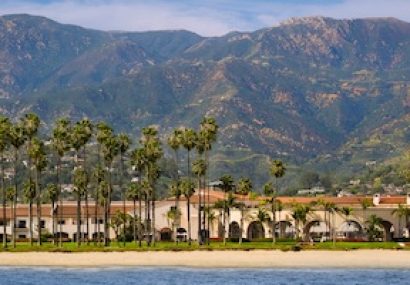
By Arley Titzler, Esq. and Hina Gupta, Esq.
On January 2, 2024, the Ninth Circuit Court of Appeal published an amended opinion in California Restaurant Ass’n v. City of Berkeley, confirming its denial of a petition for rehearing en banc. The divided court reversed and remanded to the trial court, holding that the City of Berkeley, California’s (Berkeley) prohibition of natural gas piping within newly constructed buildings was federally preempted by the Energy Policy and Conservation Act (EPCA), 42 U.S.C. § 6297(c). Under the majority’s opinion, by completely prohibiting the installation of natural gas piping within newly constructed buildings, Berkeley has waded into a domain preempted by Congress, as the state and local laws governing energy usage of natural gas appliances are expressly preempted by EPCA. [California Restaurant Association v. City of Berkeley, ___F.4th___, Case No. 21-16278 (9th Cir. Jan. 2, 2024).]
Background
In July 2019, Berkeley adopted Ordinance No. 7,672-N.S., “Prohibition of Natural Gas Infrastructure in New Buildings (Ordinance). The Ordinance placed a ban on natural gas piping in new construction buildings, including residential and restaurant kitchens. Its purpose was to encourage the installation of all-electric infrastructure, by doing away with obsolete natural gas infrastructure and associated greenhouse gas emissions. The Ordinance exempts some new construction buildings if it is either “in the public interest,” or “not physically feasible.”
In November 2019, the California Restaurant Association (Association) sued Berkeley, claiming the Ordinance was preempted by federal and state law. The U.S. District Court dismissed the Association’s EPCA preemption argument, stating EPCA must be interpreted narrowly, so as not to interfere with areas of regulation typically left to state and local governments. The Association appealed the District Court’s dismissal.
The Order of Remand
On April 17, 2023, the Ninth Circuit Court of Appeal reversed and remanded to the District Court. California Rest. Ass’n v. City of Berkeley, 65 F.4th 1045 (9th Cir. 2023). https://cdn.ca9.uscourts.gov/datastore/opinions/2023/04/17/21-16278.pdf The court held:
(1) the Association had Article III standing, and (2) the Ordinance was preempted by EPCA because it was a regulation concerning . . . energy use.
Berkeley, with the federal government, several states, and environmental and public health groups, filed a petition for rehearing en banc. On January 2, 2024, a divided court confirmed their April 2023 holdings in an amended opinion. The matter failed to receive a majority of the votes of the non-recused active judges in favor of en banc consideration.
The Ninth Circuit’s Decision
The issue before the court was the scope of EPCA’s express preemption clause, which states that once a federal energy conservation standard is set for a covered product:
. . .no State regulation concerning the energy efficiency, energy use, or water use of such covered product shall be effective with respect to such product.
To analyze this clause, the court looked to plain meaning, as indicated by EPCA’s text, structure, and context.
Berkeley contended, textually, that EPCA preemption only covers regulations imposing design and manufacture of appliances, not distribution and availability. Berkeley also argued that a preemption finding would implicitly repeal the Natural Gas Act. The federal government (Government), as amicus, contended that EPCA only preempted “energy conservation standards,” operating directly on the products themselves. Both the Association and the court disagreed.
The Ninth Circuit first determined that EPCA’s preemptive power went beyond direct regulations for covered products, and extended to building code requirements. Thus, building code requirements were included under the definition of “regulations concerning . . . energy use,” as indicated by 42 U.S.C. § 6297(f). The court found that:
. . .[i]nstead of directly banning those appliances in new buildings, Berkeley took a more circuitous route to the same result. It enacted a building code that prohibits natural gas piping in those buildings from the point of delivery at a gas meter, rendering the gas appliances useless.
The court next turned to “energy use,” which EPCA defines as “the quantity of energy directly consumed by a consumer product at point of use.” 42 U.S.C. § 6291(4). The definition of “energy” includes “electricity” and “fossil fuels,” such as natural gas. 42 U.S.C. § 6291(3).
EPCA’s preemption clause applies to any “covered product,” including consumer products like large kitchen appliances. 42 U.S.C. §§ 6291(2), 6292. The definition of “consumer product” is “any article” which “consumes or is designed to consume” energy or water, and is distributed for personal use. 42 U.S.C. § 6291(1).
Finally, the court used the Oxford dictionary to define “point of use” as the “place where something is used.”
EPCA Preempts the Municipal Regulations
Putting all these definitions together, the court found that EPCA preempts regulations, including building code requirements, relating to the amount of natural gas directly consumed by certain consumer appliances, at places where such products are used. So, by its plain language, EPCA preempts Berkeley’s regulation because it prohibits the installation of necessary natural gas infrastructure on premises where covered appliances are used.
Did the Ordinance Regulate Energy?
Berkeley also argued that the Ordinance did not regulate energy use because it acts to ban a particular type of energy, not affirmatively prescribe which one must be used. They conceded that the Ordinance would reduce energy consumed by natural gas to “zero,” but argued that “zero” was not a quantity. The court disagreed, citing the standard definition of zero, and finding that “zero” is a quantity.
EPCA defines “energy efficiency” as the “ratio of useful output of services . . . to the energy use” of that product. Berkeley argued that “zero” could not be used as the quantity of energy, or “energy use,” because that would mean the denominator of the ratio is zero, leading to a mathematically impermissible result. However, the court pointed out that both the numerator and denominator would be zero, which is just an indeterminate result.
The court held EPCA’s scope was not limited to facial regulations of covered products, extending to regulations concerning those products. The ban still fell under the term “energy use,” because use can equal zero, thus the Ordinance was not exempt from EPCA’s preemption provision.
Amicus Briefing
In an amicus brief, the federal government argued that EPCA’s preemptive scope was limited to direct regulations on covered products. The Ninth Circuit held that the Government’s textual analysis leading to their conclusion was wrong, saying that EPCA’s scope is limited to the effect of a regulation on a covered product, and noting EPCA does not say that the regulation must be on the covered products.
Dissenting Opinion
Several judges did not agree with the majority opinion. The dissenting opinion stated that the history, text, and structure of EPCA all showed that Berkeley’s regulations was not preempted because it doesn’t affect “energy use” as it was defined in the statute. The dissent also expressed concern about climate change and reducing greenhouse gas emissions, stating:
. . .[c]limate change is one of the most pressing problems facing society today, and we should not stifle local government attempts at solutions based on a clear misinterpretation of an inapplicable statute.
Conclusion and Implications
As discussed in the dissenting opinion, supporters of Berkeley-type regulations on usage of natural gas in the buildings state that this Ninth Circuit decision presents a needlessly narrow misinterpretation of federal law. They argue that the decision would be a major roadblock in the ability of local and state governments’ ability to protect the health and safety of its own residents and reduce greenhouse gas emissions. However, the Restaurant Association and critics of Berkeley’s ban argue that the ban is “irresponsible” amid electrical outages and “does little to advance climate goals.” It remains to be seen how the Ninth Circuit ruling affect regulations of other local and state jurisdictions that are incentivizing all-electric or fossil-fuel-free new buildings.




